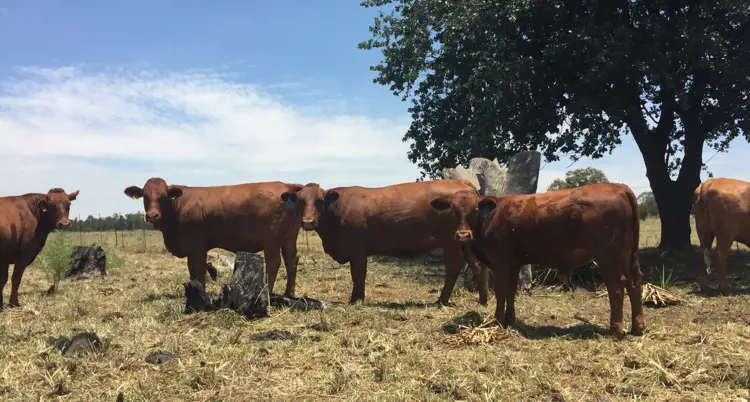Weaning and growing of weaners
There will always be a demand for weaners, with a premium for good quality dry animals. The first 30 days after weaning is probably the most stressful period in a calf’s life. Good management during this period is of the utmost importance. Limiting stress during separation and with handling, the provision of proper nutrition and cold drinking water and disease prevention, increase the value of the calves and improve their ability to reach their genetic potential, in the feedlot or as breeding animals.

It is important to decide when and in which way calves are weaned, as it affects the calf's weaning mass and the condition of the cows. As soon as the calf is weaned it reduces the pressure on the cow in terms of milk production and the cow can use nutrients for metabolic functions such as building conditioning and preparation for the next calving season. The condition of a cow herd during calving greatly influences the most important aspects of the herd’s fertility. The better the condition of a cow at calving, the better its milk supply will be and the sooner it will be on heat again after calving.
The ideal age to wean calves is between seven and eight months old. Since a cow is more valuable than a young calf, it may be decided to wean the calves earlier before the cow's condition deteriorates too much. The main purpose of meat production is to produce as many calves as possible, calving once a year. This target can only be achieved if the cow is in good condition during weaning.
There are several factors that determine the weaning age:
-
Availability of feed:
In a year where good quality grazing is abundant and the cow's condition does not deteriorate by rearing a calf, the calf can be weaned as normal. In dry years, it may be necessary to wean calves earlier.
-
Condition and age of the cow:
Older cows and first heifers take longer to get back to condition, so when the cow's condition drops to below 2,5 and the calf is at least 5 months old, it can be weaned earlier. In this way, the cow will have more time to get ready for the next calving season.
RumiLick Accelerator (V24940)) can be used as a creep feed and also during the weaning phase for animal outgrowth. By feeding RumiLick Accelerator (V24940) as creep feed, the calf will not only have a better wean weight, but it will also improve the cow’s condition. There will be a drastic reduction in weaning shock if the calf is already adapted to the weaning ration.
